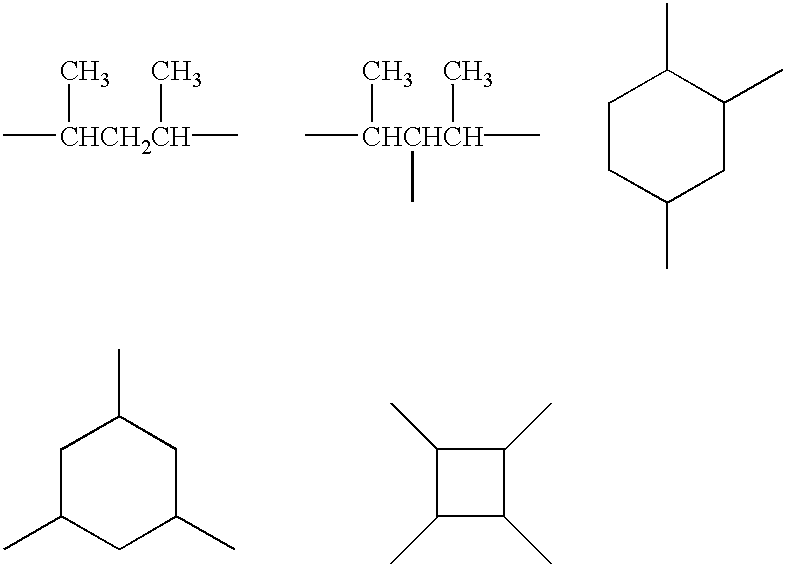Multiphase formulations of organosilicon compounds
- Summary
- Abstract
- Description
- Claims
- Application Information
AI Technical Summary
Benefits of technology
Problems solved by technology
Method used
Image
Examples
example 2
The procedure of Example 1 was repeated using 350 g of a mixture of 1.14 parts by weight of 1,2,4-trivinylcyclohexane and 98.86 parts by weight of an .alpha.,.omega.-dihydrogenpolydimethylsiloxane having 0.0119% by weight of Si-bonded hydrogen instead of the mixture described in Example 1, and comprising 1,7-octadiene and .alpha.,.omega.-dihydrogenpolydimethylsiloxane. The emulsion obtained, having a mean particle size of 220 nm, is stable and unchanged at 25.degree. C. for more than 6 months. A viscosity of 3.9.times.10.sup.6 mPa.multidot.s at 25.degree. C. is determined for the precipitated polymer. The polymer is soluble in toluene and has a C.dbd.C equivalent of 10,650 g / C.dbd.C.
example 3
In accordance with the procedure of Example 1,350 g of a mixture of 0.40 part by weight of 1,2,4-trivinylcyclohexane and 99.60 parts by weight of an .alpha., .omega.-dihydrogenpolydimethylsiloxane having 0.0119% by weight of Si-bonded hydrogen are used. The precipitated highly branched polymer is soluble in toluene and has a viscosity of more than 2.times.10.sup.7 mPa.multidot.s at 25.degree. C. The GPC spectrum (gel permeation chromatography) shows a multimodal, very broad distribution of molecular weights up to more than 10.sup.6 g / mol. The polymer has an Si--H equivalent weight of 22,500 g / SiH. The emulsion has a mean particle size of 240 nm and is stable at 25.degree. C. for longer than 6 months.
example 4
The procedure is initially as in Example 1. Before the admixing of the platinum catalyst, however, 10 g of distilled water are incorporated until a highly viscous phase forms. This is then slowly diluted with 80 g of distilled water, after which 640 mg of the Karstedt catalyst solution having a platinum content of 1.1% by weight are incorporated. A translucent creamy material which is stable for months at 25.degree. C. is obtained. For the preparation of an emulsion having a solids content of 50%, half of the creamy material obtained is diluted with 150 g of distilled water at decreasing stirrer speed. The resulting milky white emulsion has a particle size of 250 nm and is stable at 25.degree. C. for more than 6 months.
PUM
| Property | Measurement | Unit |
|---|---|---|
| molecular weight | aaaaa | aaaaa |
| viscosity | aaaaa | aaaaa |
| pressure | aaaaa | aaaaa |
Abstract
Description
Claims
Application Information
 Login to View More
Login to View More - R&D
- Intellectual Property
- Life Sciences
- Materials
- Tech Scout
- Unparalleled Data Quality
- Higher Quality Content
- 60% Fewer Hallucinations
Browse by: Latest US Patents, China's latest patents, Technical Efficacy Thesaurus, Application Domain, Technology Topic, Popular Technical Reports.
© 2025 PatSnap. All rights reserved.Legal|Privacy policy|Modern Slavery Act Transparency Statement|Sitemap|About US| Contact US: help@patsnap.com



